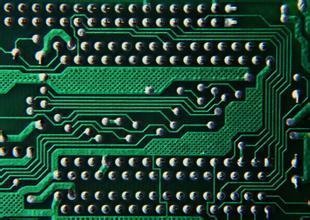-
CN
-
Service Hotline
+8618129931046 Mr. Liao


Time:2025-10-24 Views:1

Medical monitor PCB circuit boards are specialized printed circuit boards that are designed with extreme precision and adhere to strict standards to meet the critical requirements of medical monitoring devices. These devices play a vital role in healthcare settings, providing real - time monitoring of patients' vital signs, such as heart rate, blood pressure, respiratory rate, and body temperature, and are essential for patient diagnosis, treatment, and continuous care. The design of medical monitor PCB circuit boards encompasses several key aspects, including signal processing, power management, reliability, and compliance with medical regulations.
Signal processing is at the core of medical monitor PCB circuit boards. Medical sensors used in monitors generate a variety of weak and complex signals that need to be accurately captured, amplified, filtered, and processed. For example, electrocardiogram (ECG) sensors produce very small electrical signals from the heart, typically in the range of microvolts. The PCB boards are equipped with high - precision instrumentation amplifiers to amplify these weak signals while maintaining high common - mode rejection ratio (CMRR) to eliminate interference from surrounding electrical sources. Advanced filtering circuits, including low - pass, high - pass, and notch filters, are integrated to remove unwanted noise, such as power - line interference (50Hz or 60Hz) and electromagnetic interference (EMI), ensuring the integrity of the sensor signals. Analog - to - digital conversion (ADC) circuits with high resolution, often 16 - bit or higher, are used to convert the analog sensor signals into digital format for further processing by microcontrollers or digital - signal processors (DSPs). These processors run complex algorithms to analyze the sensor data, detect abnormalities, and generate alerts if necessary.
Power management in medical monitor PCB circuit boards is crucial to ensure continuous and reliable operation. Medical monitors are often required to operate for extended periods, and a stable power supply is essential, especially in critical care settings. The PCB boards are designed with redundant power - supply systems to prevent power failures. Multiple voltage - regulation circuits are used to provide stable and isolated power supplies for different components on the board, such as sensors, signal - processing circuits, and display units. Battery - backup systems are also commonly integrated to ensure uninterrupted operation in case of a primary power failure. Power - management features, such as power - on reset, power - sequencing, and power - saving modes, are incorporated to optimize power consumption and extend the battery life when operating on battery power.
Reliability is of utmost importance in medical monitor PCB circuit boards. These devices are used in life - critical applications, and any failure could have serious consequences for patient safety. To ensure reliability, the PCB boards are designed with high - quality components and materials that meet strict medical - grade standards. The components are carefully selected for their long - term stability, low failure rates, and resistance to environmental factors such as humidity, temperature, and vibration. Rigorous testing procedures, including electrical testing, environmental testing (such as temperature and humidity cycling), and reliability testing (such as accelerated life testing), are conducted during the manufacturing process to ensure the integrity and reliability of the PCB boards. Additionally, the PCB layout is optimized to minimize electromagnetic interference (EMI) and ensure signal integrity. Components are placed strategically, and proper grounding and shielding techniques are employed to prevent interference between different circuits on the board.
Compliance with medical regulations is a non - negotiable requirement for medical monitor PCB circuit boards. These boards must meet international medical standards and regulations, such as the IEC 60601 series of standards for medical electrical equipment. These standards cover aspects such as electrical safety, electromagnetic compatibility (EMC), and usability. The PCB boards are designed with safety features, such as isolation between different electrical circuits to prevent electrical shocks, and protection against overvoltage and overcurrent. EMC compliance is ensured by implementing proper shielding, filtering, and grounding techniques to prevent the PCB from emitting excessive electromagnetic radiation and to ensure that it is immune to external electromagnetic interference. By adhering to these strict regulations, medical monitor PCB circuit boards can provide reliable and safe operation, contributing to the effective monitoring and care of patients in healthcare settings.